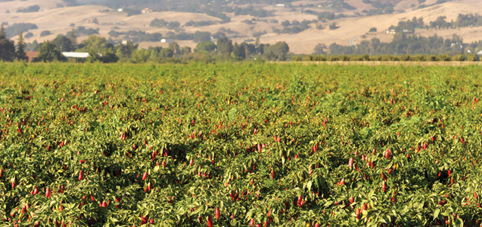Some industry specialists see opportunities for category management to extend back to the grower-shipper, with increased collaboration between suppliers and retailers. By sharing scanner sales data and customer loyalty card data with key preferred suppliers, retailers can gain their analytical support in optimizing product assortment on a store-by-store basis.
This is backed up by Roberta Cook, an extension specialist in the marketing of fruits and vegetables with the Department of Agricultural and Resource Economics at the University of California, Davis. “We can increase efficiency and reduce shrink through better coordination of supply and demand,” she explains. “This makes produce more affordable for more consumers, expanding demand.”
Future Trends
So what does the future bring for sourcing Hispanic specialty fruits and vegetables? Dave Hahn, director of procurement at Four Seasons Produce, Inc. in Ephrata, PA believes more product will come through Texas. McAllen is becoming a hub for East Coast distributors, such as the already booming avocado pipeline, and improved warehousing and inventory control can make shipments more available. “We’re now able to fill avocado orders for other wholesalers in the Northeast when they’re short of supply,” says Hahn.
Hahn predicts rising volume in tropical or exotic fruits, having seen supplies of yuca (also known as cassava), batata/boniato, and taro root increase. He sees shippers expanding both volume and variety availability. Another trend is more organic; shippers say the increase in Mexican organic volume is coming mostly from established growers. Last May, the USDA and SAGARPA (the Secretariat of Agriculture, Livestock, Rural Development, Fisheries and Food—Mexico’s agricultural agency) announced ongoing efforts to harmonize organic certification requirements between the two countries.
Are any Hispanic specialties poised to become the next avocado? This seems unlikely, though Jungmeyer sees solid growth for mangos. “The avocado board’s ripe-and-ready program really increased avocado volumes,” he observes. “I could see mango volumes building with a similar effort.” Other contenders include the purple mangosteen and guava. “We’re seeing more mangosteens from Mexico too,” Jungmeyer notes.
Import figures from the USDA show rising export volumes for chayote, jicama, malanga (also called yautia), and cassava since 2010. Shipping volume for the first quarter of 2015 jumped 19 percent for chayote and 23 percent for jicama, and the mango/mangosteen/guava category is also increasing, due mainly to mango volumes.
Lopez, in Los Angeles, says she’s started seeing another Mexican standard appearing in some stores here: guanábana or soursop. “Guanábana is very popular in Mexico,” she explains, and is generally used as a dessert. “I have also seen guanábana leaf now in the United States, too.” While frozen soursop is more widely available, USDA/APHIS listed Grenada as the only authorized source for imports in mid-2015. Fresh-cut and frozen nopales (prickly pear cactus), as well as agave leaves, are also beginning to appear in more U.S. retailers.
Rising Hispanic population rates will continue to influence North American culture, especially in the consumption of what most Americans and Canadians consider exotic or specialty produce. Prescient suppliers and retailers—those willing to experiment and stock an ever-expanding array of unusual fresh herbs, fruits, and vegetables—will reap the rewards.
Image: ©iStock.com/GomezDavid



